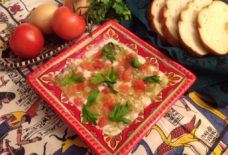Arab American Pathbreaker – Samia A. Halaby
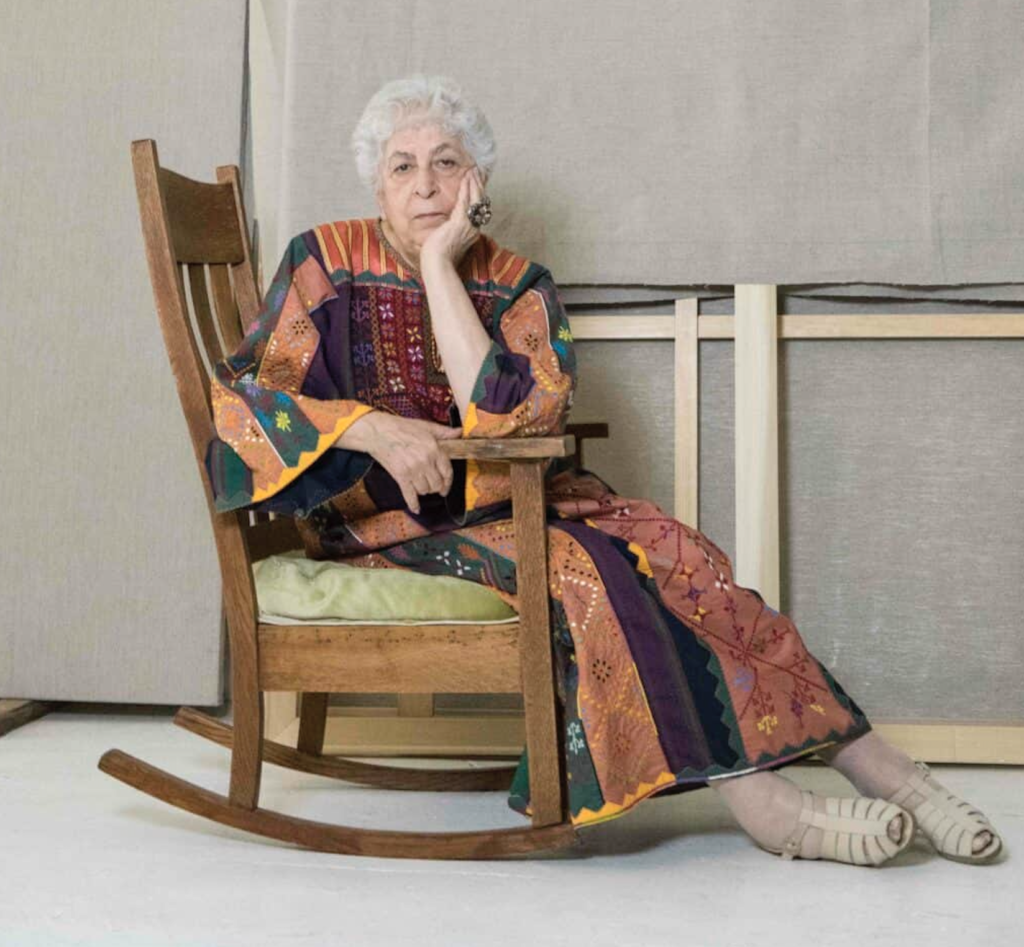
By: John Mason / Arab America Contributing Writer
This is the thirty-second in Arab America’s series on American pathbreakers of Arab descent. The series includes personalities from entertainment, business, sports, science, academia, journalism, and politics, among other areas. Our thirty-second pathbreaker is Samia Halaby, a visual artist, activist, educator, and scholar. She was born in Jerusalem in 1936 during the British Mandate of Palestine. Samia, the daughter of Asaad Halaby and Foutonie Atallah Halaby, was eleven years old when her family fled to Lebanon. In 1951, the family left Beirut to settle in the U.S. Now 87 eventually, Samia has recently been outspoken in her support of Palestinians during the Israel-Gaza war.
Samia Halaby—One of the most important living Palestinian visual artists
Halaby has vivid memories of her early life in the Mandate period in Jerusalem. Wikipedia reports that she especially recalls visual memories of the trees and leaves in her grandmother Maryam Atallah’s garden in Jerusalem. As a pastime, Samia would assign each member a shape and a color, long before she knew at that young age, she would become a painter. With the creation of the Israeli state in 1948, Halaby and her family fled their home in the port city of Yafa (Jaffa) to Beirut. Residing in Beirut until 1951, her family eventually emigrated to the U.S., settling in Cincinnati, Ohio.
Once settled in Ohio, Samia began an illustrious academic career. She attended the University of Cincinnati, receiving a B.A. degree in Design. Samia then studied at Michigan State University, earning an M.A. in Painting and an M.F.A. from Indiana University. Over 20 years, Halaby taught art at the university level for over 20 years, including a decade at the Yale School of Art. She is reportedly the first woman at Yale to hold the associate professor position. Samia also held art professorships at the University of Hawaii, Indiana University, the Cooper Union, the University of Michigan, and the Kansas City Art Institute.
Halaby’s art is abstract, complex, and challenging to describe without numerous multifaceted examples. She draws on examples from many sources, for instance, on politics for her political posters for antiwar causes, on the abstract work of so-called Russian Constructivists for others, on traditional Arabic arts and Islamic architecture, and on the visual culture of Palestine and its natural setting for yet more of her paintings.
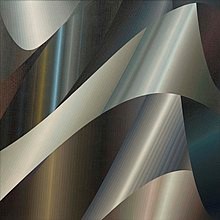
Halaby has exhibited her paintings broadly, including in Europe, Asia, and North, and South America. Samia’s work is retained by public and private collections, including the Solomon R. Guggenheim Museum in New York, the Institut du Monde Arabe in Paris, and the Palestinian Museum in Birzeit. Per Wikipedia, she has completed “more than 3,000 works, including paintings, digital media, three-dimensional hanging sculptures, artist books, drawings, and limited-edition artist prints.” Samia’s painting styles in time sequence are Geometric still-life, Helixes and Cycloids; Diagonal Flight, Dome of the Rock, Growing Shapes and Centers of Energy, and Kinetic painting, among others.
Halaby is an important contributor to the documentation of Palestinian art of the twentieth century. One of her books is, “Liberation Art of Palestine: Palestinian Painting and Sculpture in the Second Half of the 20th Century.” Another is her chapter, “The Pictorial Arts of Jerusalem During the First Half of the 20th Century.”
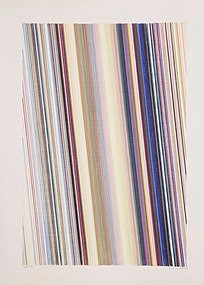
Halaby was all set for the first major American retrospective exhibition of her work to open at Indiana University, her alma mater, on February 10, 2024, when officials abruptly canceled it. According to Middle East Monitor, “The cancellation comes against the backdrop of her online criticism of Israel’s war on Gaza.” Samia had been outspoken in her support of Palestinian citizens, thousands of whom, primarily women and children, have been killed during the Israel-Gaza war.
Major Halaby’s exhibit was canceled due to the “free speech” issue over Israel’s war on Gaza
Samia’s retrospective included, according to the New York Times, “Dozens of her vibrant and abstract paintings [but] that employees had shared concern about her social media posts on the Israel-Gaza war, where she had expressed support for Palestinian causes and outrage at the violence in the Middle East, comparing the Israeli bombardment to a genocide.”
University Museum director David Brenneman later sent Samia a short note to officially cancel the show in Bloomington, Indiana. The Times reported that the note, lacking any clear explanation, read simply, “I write to formally notify you that the Eskenazi Museum of Art will not host its planned exhibition of your work.” Earlier, that same director had “applauded the artist’s ‘dynamic and innovative approach to art-making’ in promotional materials, where he said the exhibition would demonstrate how universities ‘value artistic experimentation.’”
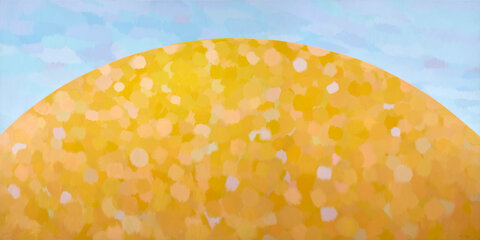
Halaby responded adamantly to the University’s statement, per the Times, “It is clearly my freedom of expression that is under question here.” Indiana University spokesman responded with a weak retort, that “academic leaders and campus officials canceled the exhibit due to concerns about guaranteeing the integrity of the exhibit for its duration.” Protestors showed their disdain for the University’s decision and an online petition including thousands of signatures demanded reinstatement of the exhibition.
Halaby’s personal statement about her alma mater, Indiana University, cancellation of her exhibit over her support for Gaza
Here, we quote mostly verbatim Samia’s statements about her position as a key Palestinian American artist and her personal identity as a Palestinian woman living in a society conflicted by a nasty Gaza war. The source is ‘Democracy Now.’ The context is our above report on the cancellation of the major artistic retrospective of her work planned for Indiana University.
Halaby’s initial response was an expression of “her shock and disappointment at the betrayal of ‘academic freedom’ evidenced by the decision. The administration has lost sight of their responsibility to the community, to the students that are there—’ This is much larger than I am,’ citing the suppression of pro-Palestine student activism around the country and calling it a kind of attempt at mind control.’”
Just prior to finalizing the retrospective of her work Samia had heard a few hints concerning her Palestinian background. “Other than that, I had expected, being an alumna and a one-time professor who had been awarded tenure, to be somewhat immune because I knew the atmosphere in the country. And so, the sudden cancellation came as a surprise. It was amazing to know that they would go ahead and act in this way when a catalog that’s one-inch thick and hardcover had been printed and delivered, plans for the opening were being made, and the artwork was picked up by the shippers. Everything was done in so beautifully and excellent museum fashion…”
Halaby said her brief conversation with the Indiana University Museum director official about the expo cancellation gave her a distinct impression. It was that the University “didn’t like my general attitude and support of Palestine and criticism of Israel and U.S. partnership, U.S.-Israel attacking Palestine, and especially the massacre, the unbelievable massacre in Gaza, both destruction of people and of culture, that my anger with that and my support of the Palestinians was the cause.”
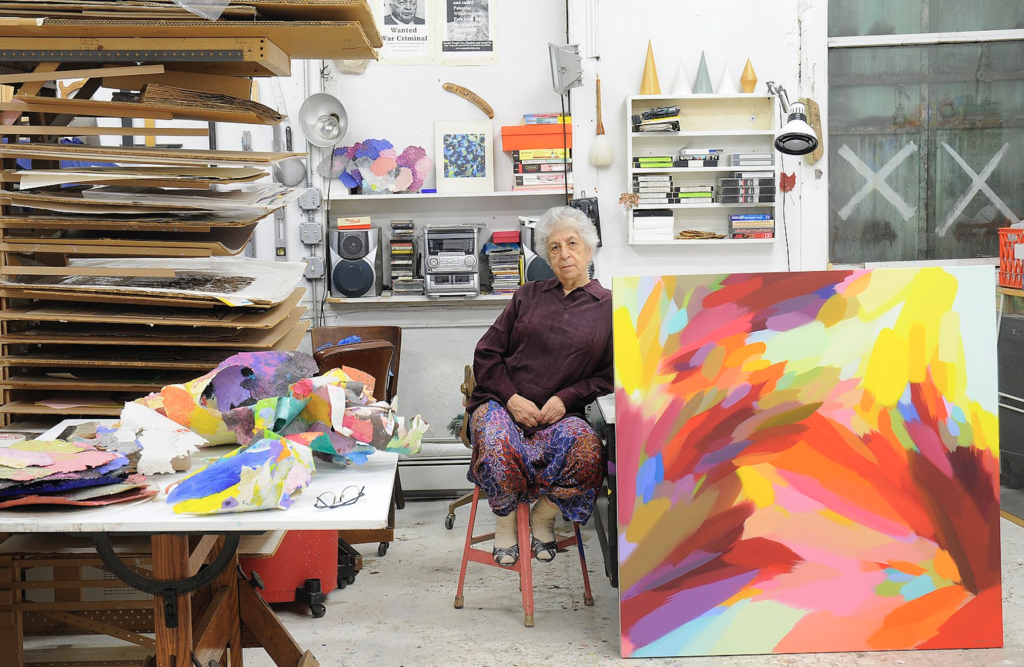
More to the point, Samia averred, “I think this idea that they’re so terrorized or frightened by me being a lightning rod and the show brings — I think the students, to their majority, were for the show. They would have been delighted to see the show. I think this idea of a lightning rod for trouble is their imagination, their invention. It’s just a propaganda, you know, invention. I don’t see the — you know, museums guard their work always, guard what is there, and they could have put a second guard on the show if that’s — they’re so frightened. But canceling it, considering all of the grants they received, and all the expenses they went through, is just not reflective of this kind of fear. Museums all over are concerned about art. So, yes, that’s my reaction to that.”
Halaby put her love of art and personal freedom perfectly, “You know, I would like to say some more about what’s happening in Gaza because it connects to art. First of all, I do want to say that this is much larger than I am. There’s suppression of students throughout the U.S. There’s suppression of faculty.” In Samia’s case, we see art and politics converging, even clashing, this time in the context of Palestinians against forces that want to make them wrong or, worse, invisible.
Sources:
–“Samia A. Halaby,” Wikipedia Biographies of Arab Americans, 2024
–“Protesters rally after US university cancels Palestinian artist’s exhibit, Middle East Monitor, 1/28/2024
–” Indiana University Cancels Major Exhibition of Palestinian Artist, New York Times, 1/11/2024
–“Palestinian Artist Samia Halaby Slams Indiana University for Canceling Exhibit over Her Support for Gaza,” Democracy Now, 1/18/2024
John Mason, Ph.D., focuses on Arab culture, society, and history, and is the author of LEFT-HANDED IN AN ISLAMIC WORLD: An Anthropologist’s Journey into the Middle East, New Academia Publishing, 2017. He has taught at the University of Libya, Benghazi, Rennselaer Polytechnic Institute in New York, and the American University in Cairo; John served with the United Nations in Tripoli, Libya, and consulted extensively on socioeconomic and political development for USAID and the World Bank in 65 countries.
The views and opinions expressed in this article are those of the author and do not necessarily reflect the position of Arab America.
Check out our Blog here!


